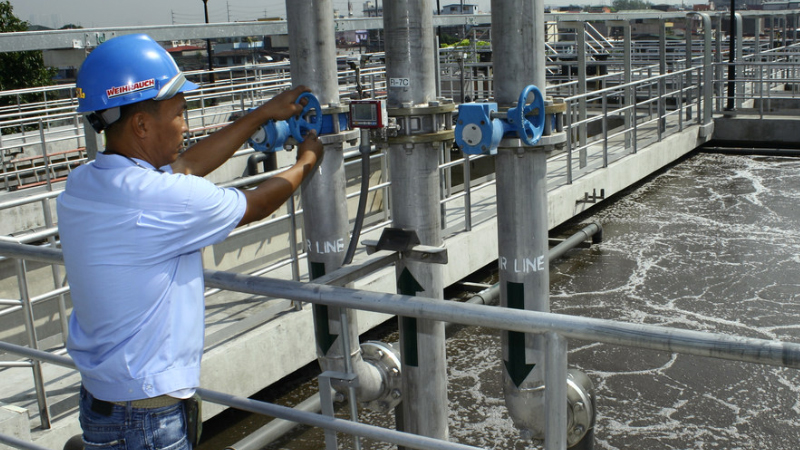UN-Water coordinates the efforts of UN entities and international organizations working on water and sanitation issues. Together, we are the ‘UN-Water family’ and SDG 6 – to ensure the availability and sustainable management of water and sanitation for all – is core to their work.
Protecting Human and Environmental Health
 If, as a global society, we don’t eliminate open defecation and move everyone to safely-managed sanitation services, and if we don’t protect water resources by reducing pollution and recycling as much water and waste as we can, then we will not only fail to meet SDG 6, we will miss SDG 12.
If, as a global society, we don’t eliminate open defecation and move everyone to safely-managed sanitation services, and if we don’t protect water resources by reducing pollution and recycling as much water and waste as we can, then we will not only fail to meet SDG 6, we will miss SDG 12.
The future is about looking at wastewater and seeing an opportunity to protect human and environmental health and to extract materials that can be used again and again in a more circular society.
Ensuring sustainable consumption and production patterns must begin with the way we manage our most precious resource – water – the basis of life itself.
Human Beings Face an Existential Threat of Their Own Making
Our seemingly infinite and ever-increasing capacity to discharge waste – bodily or otherwise – into nature is turning our environment into an open sewer.
Billions of people around the world have no effective sanitation system, which means their faeces is not safely contained or disposed of, and ends up contaminating food and water sources with deadly pathogens.
Indeed, the vast majority of wastewater generated by society – from industry, agriculture and municipalities – flows back into the ecosystem without being treated or reused, polluting aquifers and waterways and discarding water, energy, nutrients and other recoverable materials.
Clearly, this situation will not help us achieve Sustainable Development Goal (SDG) 12.
You can play your part during the 2018 to 2028 Water Action Decade, which will accelerate efforts towards meeting water-related challenges, including limited access to safe water and sanitation.
Success Stories
Purifying wastewater before discharging
The effluent volume from Schiphol Airport, Amsterdam, is comparable to that of a small city with a population of 45,000. About half of the wastewater originates from passengers and businesses at the airport, 25% is discharged by aircraft and catering, and the remaining volume is produced by other aviation-related businesses. The on-site wastewater treatment plant biologically purifies water to a quality fit for discharge into local waterways.
Recovery of energy and biofuels from biosolids
The new Sewerage Act of Japan of 2015 requires sewage operators to utilize biosolids as a carbon-neutral form of energy. In 2016, 91 wastewater treatment plants recovered biogas for electricity and 13 produced solid fuels. A leading example is the city of Osaka, which produces 6,500 tonnes of biosolid fuel per year from 43,000 tonnes of wet sewage sludge for electricity generation and cement production.

